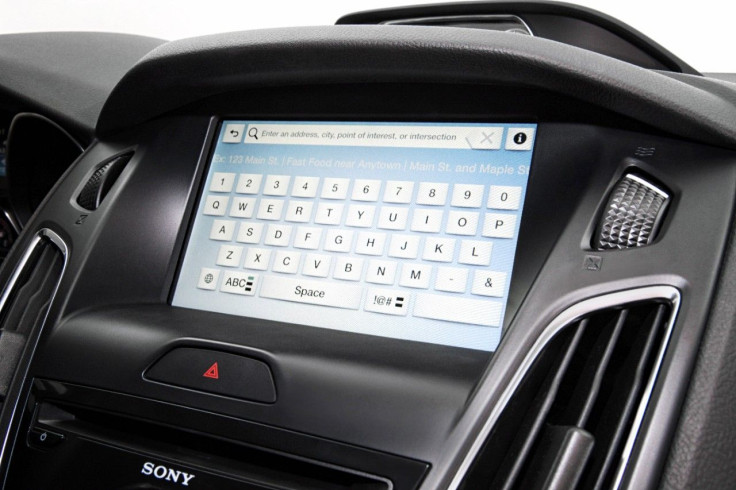Why Ford Dropped Microsoft, Partnered With Canadian Firm For Updated Sync System

Ford Motor Company will no longer have to mail USB drives to customers to update their in-vehicle operating system. The automaker, which has officially ended its relationship with Microsoft for its third-generation system, has learned an expensive lesson in how not to build a “carputer.”
The Dearborn, Michigan, company said Thursday its Sync 3 system will be offered in 2016 model-year Ford and Lincoln vehicles, and the company says its customers will find a faster and more intuitive system than its predecessors. Like all automakers, Ford is working to keep up with the Silicon Valley innovations that are rapidly changing the way drivers interact with their vehicles. Infotainment systems from just a few years ago seem antiquated and clunky because recent versions of these systems are vastly improved.
For Sync 3, Ford ditched its partnership with Seattle-based tech giant Microsoft Corp. and partnered with Canada’s QNX, the software developer owned by BlackBerry Ltd. that has become the biggest provider of in-vehicle operating systems, including those used by Chrysler, General Motors, BMW and Audi.
“Ford wanted an operating system from a company that’s more committed to automotive interfaces,” Mark Boyadjis, senior analyst for automotive technology at IHS Automotive, said. “Microsoft has made it very clear that they’re a devices and services company.”
Ford says it has taken consumer feedback seriously, fixing many of the issues that vexed Sync 2 (marketed at MyFordTouch), which was introduced in 2011. MyFordTouch was so problematic that Ford re-introduced physical buttons and dials so customers could use them to control the infotainment system instead of the touchscreen interface.
Now the touchscreen buttons are bigger and voice commands more responsive, Ford says. It will be also easier to integrate smartphone apps and Apple iPhone users will be able to talk to Siri through Sync 3 as they already do with their smartphones.
“SYNC 3 is another step forward in delivering connectivity features customers most want, and they tell us this kind of technology is an important part of their decision to buy our vehicles,” Raj Nair, Ford’s chief technical officer, said in a statement annoucing the new system.
The new operating system will be able to connect to Wi-Fi signals, something that its predecessors could not do. When Ford tried to address some of the issues with MyFordTouch, which lacked connectivity, it was forced to spend an estimated $40 million to $50 million producing and delivering as many as 500,000 USB drives to Sync customers, Boyadjis said. Because it took about 30 minutes to upgrade the system using that portable drive, “I know for a fact not every customer they sent that USB to did the upgrade,” he added.
With Wi-Fi, Ford can now simply transmit updates over the air, as its rivals do. Sync 3 will automatically detect a home wireless network and software updates can happen while the car is parked overnight, saving Ford millions of dollars in USB dongles and Ford customers’ time.
The first-generation Sync was introduced in 2007, and though it lacked many of the features that are common in newer systems, it was well received as a way to access a mobile phone’s features. But as consumers began to expect more features and more intuitive interfaces, Microsoft wasn’t able to deliver.
In the early 2000s, German car giant Daimler AG, which owns Mercedes-Benz, set up the first Silicon Valley research and development of any major automakers. But in the past five years, more car companies have planted their flags in the northern California technology hub.
In 2011 Ford tapped Palo Alto-based design firm IDEO, which famously designed Apple’s first mouse, to develop its MyFord mobile app. The company also has its own technology experts to oversee the development of in-car computer systems, including Venkatesh Prasad, a former Caltech research scientist and primary architect of the Sync system, and Parrish Hanna, a former consumer experience designer at Motorola who now heads Ford’s HMI (Human Machine Interface) development.
© Copyright IBTimes 2024. All rights reserved.












